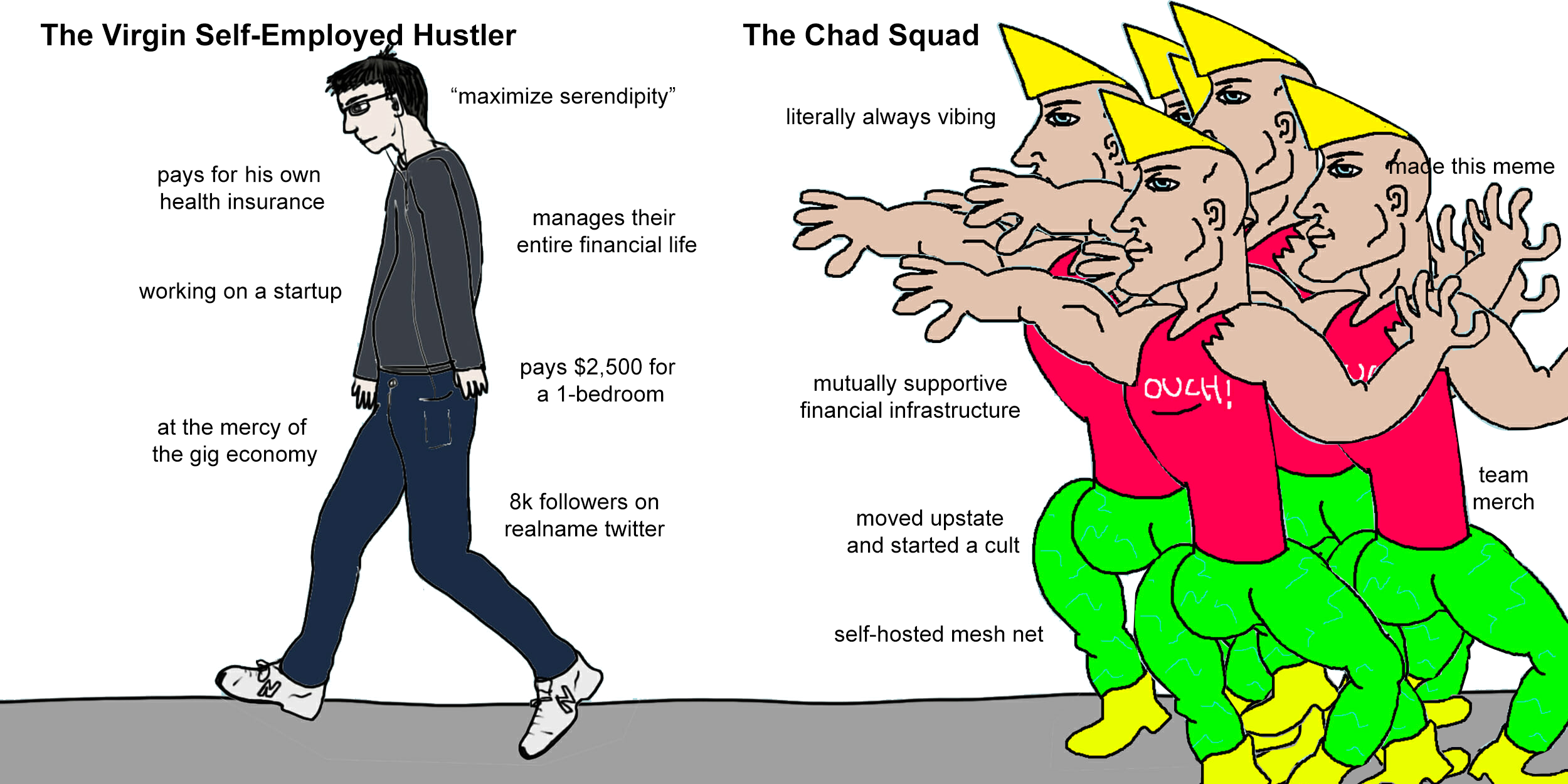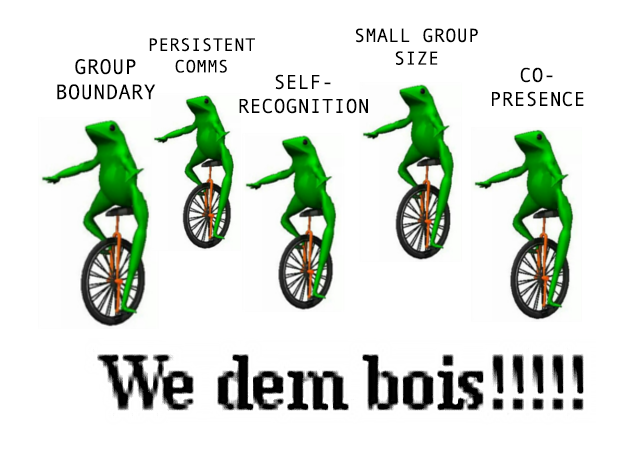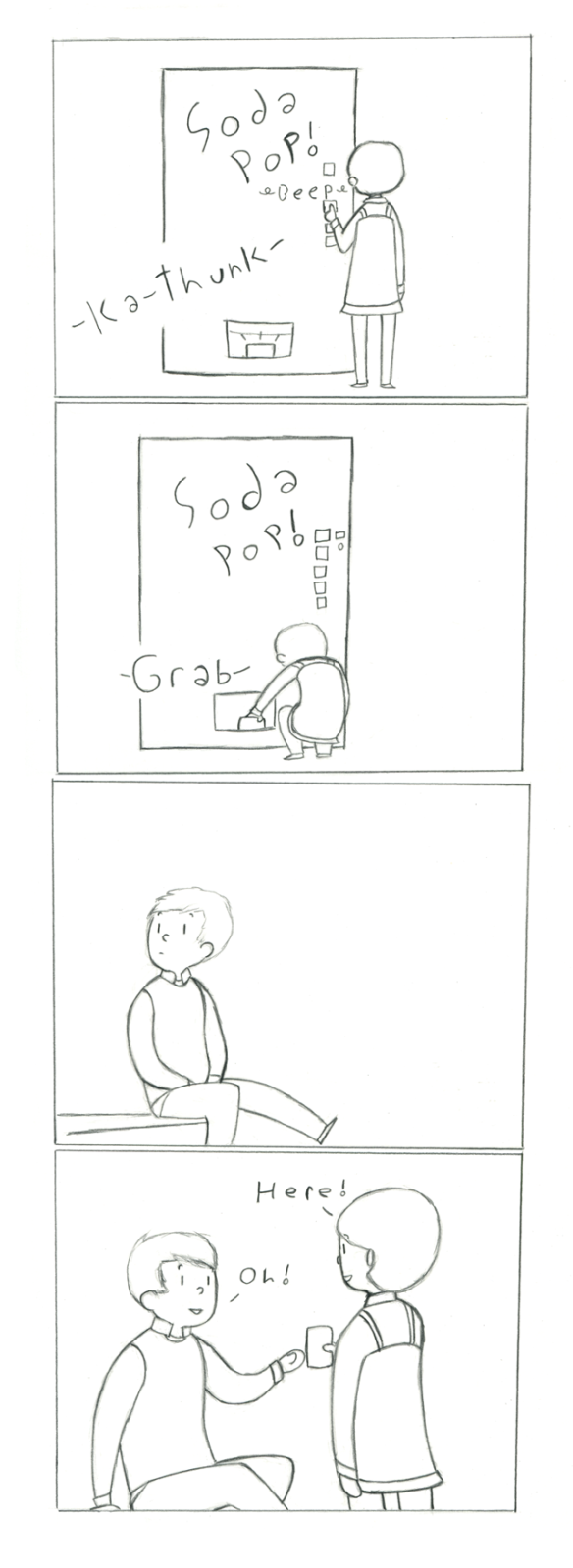SOME RULES FOR MAKING BETTER FILMS
Maximise new world-building in each scene. Even if we’re in The Real World Today, there are so many opportunities to show character and novelty in each environment. What are the bits of the world that the character holds close. What are the things they crerate and use. Even if we’re going in on a single vibe, eg. gothic, take us on a tour of all of the settings appropriate to that genre (see: Guillermo Del Toro’s work from Pacific Rim onward.
Show us how people live. Give us that slice of life to help establish a setting. Having a few different everyday interactions is good because it gives a sense of the neighbourhood, and a sense of normalcy. Also, more novelty is more satisfying and builds up the foundation of the world. The foundation is what is normal and if that happens to be both very familiar but in some way exceptional, you win. Consider filming your fantasy (and every film is a fantasy) like it’s a documentary in those moments between the drama.
Let us hang out with the characters. Talk is cheap, so once you created a space, let us luxuriate in it, and discover new details from shot to shot.
Use as few shots as possible. Be economical. Fewer setups, means more time, means more budget. And more deliberate framing means that art dept can focus there efforts on the places we’re actually going to see. This applies especially to the drama. Do not be stingy. The first two points rely on you showing more of the world than most do.
Univisium by default. 16:9, or even DCI is out. Univisium is in. It’s the baseline. Go for wider ratio if you want, but no taller than Univisium for films.
Non-breathing spherical lenses by default. If you’ve got a good reason to use messy glass, by all means. Sometimes it’s easier to bury digital set extension in the mix. Sometimes it helps sell the fantasy. Maybe our perspective involves seeing the world through glass and distortions. If you’re not going to wear pants, though, have a good reason.
The poor tend toward cool; the super rich tend toward depravity. This is just a way to do some fun politics through film, and avoid material status as a character trait/virtue.
On set, best idea wins.
It’s gotta be a tight ninety. If you want more, you’ve gotta earn it.
October 21, 2021
Do you ever have this feeling that you’ve determined some otherwise unexamined aspect of reality or history by speaking it as if it were so?
Like you’re not entirely sure whether a thing is a memory or your imagination, but there’s no mental friction to either. And so you speak it to another, and they agree, not entirely sure if they’re remembering or imagining a thing, but sure that’s true enough. They certianly nod at your words as there were no greater truth, but there’s something in their eyes, a slight squint, that suggests they are the freshly convinced.
And, sure enough, the thing mustn’t be important, otherwise you’d be sure.
Every time you interrogate this truth, though, with someone tangentionally related or secondarily effected, they can;t help but confirm your honest theory.
January 28, 2021
20210118 KULESHOV’S WET LIBRARY
The Kuleshov effect mimics the essential narrative forming function of the human mind, which is very difficult to escape.
The world is chaos. No-one is in control.
We often believe, or want to believe, to paraphrase Alan Moore, that someone is in control or is guiding world affairs because it is more comforting than the idea that no-one is.
And so we come upon some teleological sense of the world, some sense of tendency and trajectory, in large part because of two things.
The news has a narrow focus.
Humans experience life one moment at a time in a linear sequence.
We don’t see it all on the nightly news. We get a little more in the paper. Perhaps the most if we go scrawling the news blogs in a way that tests the limits of how much new information the human mind can process and retain (I tried for years).
In the same way that the news is made of one video shot at a time, one word at a time, one after the other, we are all editing together a supercut of the news during the week, the month, the year, our lives, where one thing happens after the other, and it starts to take on the quality of a megastory.
We don’t choose the subject of that megastory, or the bias in the way it’s presented. We don’t know what we’re missing. We kind of assume and trust that the news we see in the evening is the actual highlights reel of the days events. We trust that the journalists, if we are lucky enough to witness news reported by working journalists in the old truth-seeking tradition, we trust that they already know what is going to be important in the future, as if they were doing the work of historians of the recent past.
The narrative-forming, closure-seeking part of the mind weaves the story of the world as we hear it together into something that seems to possess coherence and tendency.
That same narrative-forming, closure-seeking Kuleshov machine is what weaves together the news with films with TV with Instagram memes to create the cinematic edit of our lives, committed to organic nerve tissue and the replayable as both fuzzy recollections of moments that degrade with playback like wearing out an old VHS tape, that are a quickly searchable wiki compiled by an obsessive and poetic metadata tagger, are all coupled with a different psychological object: an index card.
This index card logs all additions to the wet library and is itself recalled (and added to) with each experiencing and remembering and recollection.
This index card is rarely borrowed and is always tucked in the cover of everything in Kuleshov’s Wet Library.
On its own, and with some knowledge of the things to which it refers, it tells a story of the world (certainly as we have lived it). The changes it suggests will seem as if they were certain. We look at it and anticipate what will be added next.
The acquiring librarian described on the index card might seem to be a pessimist, if we see an increasing number of tragic works being added. Maybe the opposite if things seem to be getting better. Maybe cultural maturity is assured. Maybe the transition to green fuels is guaranteed.
But no-one is in charge of these acquisitions. Not like that. They happen as we live. Constantly. And we tell ourselves a story on the index card, a story about how things are going and how they probably going to.
Of course, none of this describes the real world. Only the one we live in.
January 17, 2021
I am writing A Song For Magpie.
January 11, 2021
20210109 LINKS
https://www.taxresearch.org.uk/Blog/2020/12/12/macroeconomics-money-and-post-brexit-recovery-all-in-one-twitter-thread/
“How is it possible that although all money is made by promises - including yours, and mine - the government is so important? First, it alone creates the currency. Secondly, as I noted, it has its own bank. So it can always repay, because it will always lend it money.”
“Twelfth, we can have full employment at fair wages, and it pays for itself.
Thirteenth, there is no need for austerity, at all in that case.”
https://otherinter.net/squad-wealth/


“As SQUAD VIBES grow, so does the possibility of interdependence and resource sharing—social, emotional, financial. Trust brought by consistent socialization and self-recognition is a foundation for exploring what the squad is capable of together. SQUAD CULTURE has only just begun.”
“Inside the subterranean caves of the social deep web, chosen-kin groups grow their own culture. The squad doesn’t need its own micro-currency—images, art, music, takes, shitposts, and, indeed, roasts are the native medium of exchange. Likewise squads have little use for internal financial incentives. Instead, playful exchanges produce trust, reciprocity, and VIBES—the ineffable group energy that squads value most. Accordingly, the core of squad production is the continuous production of the squad itself.”
“Group identity. Shared space. Vibes. These not only enable the creation of social capital, but strengthen the squad’s capacity to organize, minimizing transaction costs and leading to greater productive capacities and resilience; this is”the nature of the squad.” But while squads can be viewed as a “nexus of contracts”, unlike the Coasean firm, they are without legal structure. Social contracts are instead effected through the unspoken bonds of mutual respect and ingroup norms.”
https://www.notenoughcinnamon.com/japanese-miso-eggplant/
https://vimeo.com/search?q=sam%20chiplin
https://theanarchistlibrary.org/library/ursula-k-le-guin-the-carrier-bag-theory-of-fiction
“The first cultural device was probably a recipient…. Many theorizers feel that the earliest cultural inventions must have been a container to hold gathered products and some kind of sling or net carrier.
So says Elizabeth Fisher in Women’s Creation (McGraw-Hill, 1975). But no, this cannot be. Where is that wonderful, big, long, hard thing, a bone, I believe, that the Ape Man first bashed somebody in the movie and then, grunting with ecstasy at having achieved the first proper murder, flung up into the sky, and whirling there it became a space ship thrusting its way into the cosmos to fertilize it and produce at the end of the movie a lovely fetus, a boy of course, drifting around the Milky Way without (oddly enough) any womb, any matrix at all? I don’t know. I don’t even care. I’m not telling that story. We’ve heard it, we’ve all heard about all the sticks and spears and swords, the things to bash and poke and hit with, the long, hard things, but we have not heard about the thing to put things in, the container for the thing contained. That is a new story. That is news.”
“If, however, one avoids the linear, progressive, Time’s-(killing)-arrow mode of the Techno-Heroic, and redefines technology and science as primarily cultural carrier bag rather than weapon of domination, one pleasant side effect is that science fiction can be seen as a far less rigid, narrow field, not necessarily Promethean or apocalyptic at all, and in fact less a mythological genre than a realistic one.
It is a strange realism, but it is a strange reality.
Science fiction properly conceived, like all serious fiction, however funny, is a way of trying to describe what is in fact going on, what people actually do and feel, how people relate to everything else in this vast stack, this belly of the universe, this womb of things to be and tomb of things that were, this unending story. In it, as in all fiction, there is room enough to keep even Man where he belongs, in his place in the scheme of things; there is time enough to gather plenty of wild oats and sow them too, and sing to little Oom, and listen to Ool’s joke, and watch newts, and still the story isn’t over. Still there are seeds to be gathered, and room in the bag of stars.”
https://stilleatingoranges.tumblr.com/post/25153960313/the-significance-of-plot-without-conflict
“Kishōtenketsu contains four acts: introduction, development, twist and reconciliation. The basics of the story–characters, setting, etc.–are established in the first act and developed in the second. No major changes occur until the third act, in which a new, often surprising element is introduced. The third act is the core of the plot, and it may be thought of as a kind of structural non sequitur. The fourth act draws a conclusion from the contrast between the first two “straight” acts and the disconnected third, thereby reconciling them into a coherent whole. Kishōtenketsu is probably best known to Westerners as the structure of Japanese yonkoma (four-panel) manga; and, with this in mind, our artist has kindly provided a simple comic to illustrate the concept.”

https://stilleatingoranges.tumblr.com/post/53045164430/plot-structure-all-the-way-down
“First, a recapitulation. Writers in the West have long relied on the three-act plot structure, which is driven by conflict. That is, a three-act plot involves a competition of contrary forces–such as good and evil, desire and obstacle or fate and free will–, in which one ultimately triumphs over the other. This pattern is more obvious in a save-the-world epic than in, for example, a psychological drama; but it animates both. Kishōtenketsu, on the other hand, is an exercise in exposition and contrast. It is characterized by ostensibly directionless development and sudden twists. While this method allows for conflict, such events are incidental rather than structurally endemic to the plot. It is not conflict and competition but exposition, difference and surprise that generate interest.”
#links
January 9, 2021
20210105 LINKS
https://www.earnestpettie.com/liminal-spaces-may-be-the-most-2020-of-all-trends/
“Of course, there are antecedents we can find. For example, The Dictionary of Obscure Sorrows created two words that have been used to describe liminal spaces, anemoia and kenopsia, in 2014 and 2012, respectively. Anemoia is nostalgia for a time you couldn’t have experienced, and kenopsia is the atmosphere of a normally bustling place that is now vacant.
And if you’re hardcore internet, you probably read all of the above and connected it to abandoned malls, vaporwave, and abandoned mall vaporwave, and you aren’t wrong, but you’re not quite right, either. Ooohh, you’re so liminal right now.
The difference is that while some of these other nostalgic trends are rooted in a strange familiarity, they put you at ease, and liminal states do the opposite. They put you on edge.”
https://freshonthenet.co.uk/the-manual-by-the-klf/
“From now on, whether or not the technology makes the traditional musician’s craft redundant, the young creative type will become more aware that he is able to control more areas of the way his music is communicated to the masses. The manipulation of this control will become a very important creative form of expression in itself.”
#links
January 5, 2021


